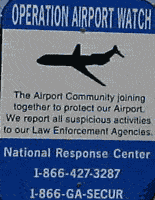As U.S. car sales near a 27-year low, dealerships have a higher stake than ever in ensuring the safety of their inventory. Many are enhancing security procedures or developing new measures to prevent theft, deter vandalism and ensure the safety of their employees and inventory.
- By J. Matthew Ladd, John Lynch
- May 01, 2009
Despite the fact that disasters and unplanned business interruptions have made it absolutely critical for organizations to quickly and accurately communicate with all stakeholders during such an event, many businesses have not put in place an effective emergency notification system that can actually reach recipients, according to an annual study conducted by Varolii Corp.

An increasing number of business continuity professionals and disaster recovery experts are discovering that the most vulnerable links in the continuity- of-operations chain are the people a business serves and the people who serve them. While this seems intuitively obvious now, for decades, resolving the fragility of technology had been the exclusive focus of the industry.
From severe weather to acts of violence, schools across the nation are forced to deal with a variety of emergencies. As a result, districts and administrators have become well versed in crisis planning.
- By Karla Lemmon
- Oct 01, 2008

Defined as occurrences that have or might have a negative impact on the continuity of routine operations, incidents may occur in any organization, public facility or business entity.
- By Roni Zehavi
- Aug 01, 2008
The ASIS Commission on Standards and Guidelines has released the second edition of the Threat Advisory System Response Guideline (TASR).
Business is all about managing risk, and risk management comes down to making solid business decisions to avoid and mitigate potential threats, including natural disasters.
- By Richard Daley
- Jun 02, 2008

While every individual and organization that provides security products or services will have their spin on what security is and how to achieve the desired level, the truth is, security is essentially an unachievable outcome. A common definition of security is, “freedom from danger, fear and anxiety.” Security defined as such is, therefore, unattainable.
- By Kevin McDonald
- Jun 02, 2008

When hurricanes in 2005 leveled the Charlotte County Airport in Punta Gorda, Fla., airport officials chose to rebuild, and to do so stronger and smarter. That meant making sure the airport’s security system satisfied federal and state regulations in a post-9/11 world that had to protect against potential terrorists turning airplanes into deadly bombs.
- By Debbie Bolles
- Apr 08, 2008

Securing an entire network at a finite number of ingress points simply does not offer the risk mitigation companies need.
- By Kevin Prince
- Apr 02, 2008
Sometimes it seems as if everything is about security these days. Homeland security, physical security, digital security— there’s constantly a new security issue that needs attention.
- By Monte Robertson
- Feb 14, 2008

You’ve all seen that guy in the hallway: that unfamiliar face. “He must be the new guy.” “He must be here for a meeting.” “Isn’t he Jane’s husband?” “He probably works for facility management.” In too many cases, employee simply do not know who or why that person is wandering around the premises

In the United States, people encounter a perpetual tradeoff between freedom and security. The nation depends on a complex system of critical infrastructures to maintain a high quality of life and the freedoms enjoyed every day. New threats to security have these organizations taking a second look at their vulnerabilities, however, scrambling to minimize disruption and to maintain the integrity of their operations. In the past, national security was perceived as the role of government. Today, Department of Homeland Security efforts to protect critical infrastructures from physical attack are a shared responsibility of the public and private sectors, as well as individual citizens.
IT organizations are challenged to apply sufficient focus and expertise to address ongoing business continuity concerns.
Last month, this column addressed HSPD-20, which mandates government agencies to appoint a senior official at the assistant secretary level as continuity of government coordinator to prepare plans, budgets and exercises to test continuity planning, preparation and capability.
- By Col. Timothy D. Ringgold
- Dec 01, 2007

Earthquake. Fire. Hurricane. Blackout. Virus. Terror attack. Any of these natural or manmade events can cause the obliteration of business data. And if that isn’t frightening enough, Sarbanes-Oxley, HIPAA and Securities and Exchange Commission requirements will really scare you. Face it, data needs to be kept alive and accounted for to survive and thrive in the testing conditions of modern-day business.

Since the unprecedented destruction of hurricanes Wilma, Rita and Katrina two years ago, the spotlight shines on the need for strong business continuity plans.
- By Deven Kichline
- Nov 05, 2007
Last May, the White House issued Homeland Security Presidential Directive 20, HSPD-20, which mandates government agencies to appoint a senior official at the assistant secretary level as their continuity of government coordinator to prepare plans, budgets and exercises to test continuity planning, preparation and capability.
- By Col. Timothy D. Ringgold
- Nov 01, 2007
Ask any security officer what keeps him or her up at night, chances are having to deal with the fallout of a data breach will be high on the short list. If you scan headlines over the past year, you can see why—according to the Privacy Rights Clearinghouse, since 2005, more than 165 million records from private companies, government organizations and universities containing sensitive personal information have been involved in security breaches.
- By Patrick J. Conte
- Nov 01, 2007

Those in the security industry know that protection doesn't just stop with police officers and first responders.
- By Karina Sanchez
- Oct 02, 2007